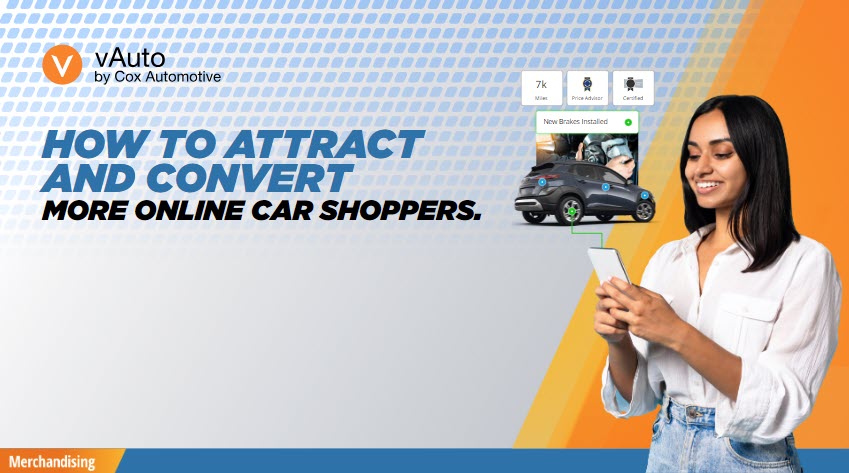3 Beacons To Guide Dealers At NADA 2015
I’m pumped for this year’s NADA convention in San Francisco.
Like other dealers, I regard NADA as pretty special. It’s a one-time opportunity to meet  with many of my dealer friends from across the country in person. The convention also provides a wealth of ideas and insights to apply in the coming year.
with many of my dealer friends from across the country in person. The convention also provides a wealth of ideas and insights to apply in the coming year.
It’s easy to feel overwhelmed and worried at NADA. What if you miss something important? I fight this worry these days by doing my best to get more sleep and exercise during NADA than I used to.
But I’ve also found it helps to head into NADA with a handful of strategic beacons to illuminate all the convention offers and determine whether an idea or product really offers a good fit for your dealership. Call it a way to winnow the worthy from the worthless.
As I head to NADA, here are three beacons that I believe are relevant for all dealers:
1. The need for greater in-dealership efficiencies. It’s no secret that while most dealers have been blessed with rising new and used vehicle sales volumes, profitability per car has diminished. This reality owes to a variety of factors, including the ever-increasing influence of the Internet, volatility in vehicle pricing and valuations and the rising costs of doing business.
In this environment, dealers can continue to sell more vehicles but they won’t achieve maximum profitability, either on a per-car or total dealership basis, unless they pursue ways to provide sales and service to customers more efficiently.
If we look around at other retail sectors, the pursuit of increased efficiencies is everywhere. Executives understand that the sale of products and services in a highly competitive, price-sensitive retail environment is the final leg of profitability—your opportunity to maximize margin must occur before a transaction with a customer.
For dealers, the need for greater efficiencies should be a paramount consideration as they evaluate the array of ideas and solutions proffered at NADA. In my view, if a solution doesn’t help sell a car or serve a customer in a more cost-effective and efficient manner, it probably isn’t a good fit for today or the future.
2. The need to become more customer-centric. One of the most significant paradigm shifts for dealers is that today’s highly wired, technology-driven marketplace offers more insights about customer desires, wants and needs than ever before. These insights can and should inform virtually every aspect of your business, from the new/used vehicles you choose to stock, to the way you present these vehicles for sale online, and to the processes you employ as customers come to you to buy or service vehicles and leave your dealership.
In this environment, it seems to me there are few “fresh ups” on the showroom floor or service drive any more—after all, customers today typically engage your websites and call centers before they arrive. Similarly, it’s important for dealers to recognize that a customer’s satisfaction doesn’t end after a vehicle sale or service visit.
As dealers attend workshops and visit the exhibit floor, it seems critical that they look for ways to advance their ability to know and serve a broader array of customers in a manner that differentiates them from the competition.
3. The need to better serve and retain employees. Despite all the advances in our business, dealers still suffer from persistent turnover—a problem that often undermines their ability to become more efficient and serve their customers in the more me-centric fashion they desire. The sharpest dealers have already begun to reckon with this long-standing issue. They’ve adopted benefits packages, hiring/recruitment strategies, leadership training, pay plans and performance management models that, years ago, would seem ill-fitted to the realities of highly charged dealership operations.
Many dealers still believe the car business is different than other retail businesses and, in many ways, this remains true. However, few retail businesses suffer the productivity and profit losses that result from poor employee retention, and many dealers appear to accept these consequences as “the cost of doing business.”
This mindset will only, over time, hamper a dealer’s ability to profit and prosper in the years ahead—particularly as the next generation of employees want more from their work experiences than a paycheck. It’ll be no small challenge for dealers to understand what makes these employees tick, capture their interest in recruitment efforts and offer career paths that play to their passions.
Interestingly, NADA’s Human Resources workshop track addresses many of these employee recruitment and retention topics, and I won’t be surprised if the sessions see more dealers than they have in the past.
I hope these beacons prove useful for dealers heading to NADA in San Francisco this week and beyond.
I’ll be spending a lot of time at the vAuto booth (#1718S) and look forward to seeing you there, and sharing my NADA insights and observations here.
The post 3 Beacons To Guide Dealers At NADA 2015 appeared first on Dale Pollak.








